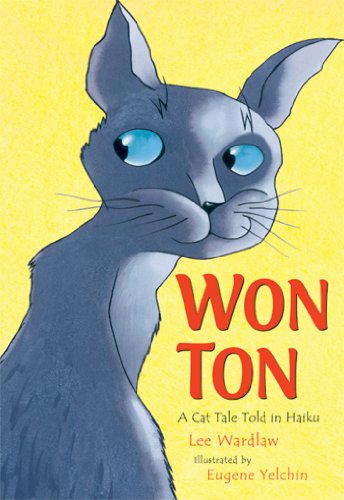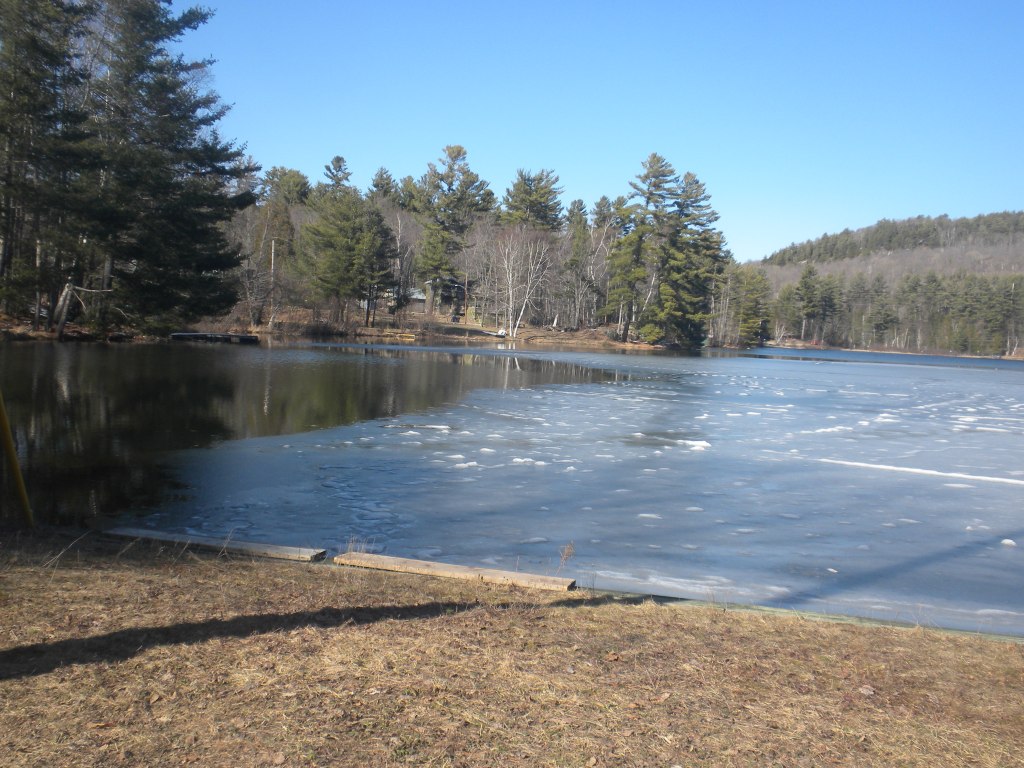Yes, I know Autism Awareness Month is April – not August. But they both begin with the letter ‘A’. And autism is a lifelong condition. It does not go away when spring ends and summer begins. It does not go away when a child grows up and turns 18. Approximately 1 in 59 children has been diagnosed with some form of autism spectrum disorder, according to the CDC.
I am neuro-diverse. I recall the day I stumbled on the website nldline.com while helping a library patron search for books on learning disabilities for math rather than language. My eyes opened wide. There were people with the same issues as me! What joy!
My own neurologically atypical existence was complicated by the fact that I am an immigrant. By the time I was ten, I had lived on three continents, and spoke three languages. That could be why my issues and challenges were not taken seriously and sometimes attributed to cultural difference.
When I was growing up in the 1960s, little was known about neurodiversity. I had difficulty in group conversations, so I tended to stay to myself – and came to believe I was shy. (I’m not). Even as an adult, group conversations still pose a problem. I don’t read body language well so I don’t know when it’s ok to speak – so I either stay quiet or interrupt.
I was told I was immature and would grow up eventually, or that I was lazy and not trying hard enough. Now I know that I have slow processing speed, and that is why everything takes longer.
Yet no matter how hard I tried, I kept failing at certain things. I never learned to ride a bike, or to throw and catch a ball. We tell our kids, “You can do anything if you try.” But this is not true. Not only will I never be a brain surgeon – I’ll never be a ballerina because I have dyspraxia. I’m a klutz.
We’re all different – and that makes for an interesting world. No matter which spectrum we belong to, everyone has strengths, and everyone has challenges. All humans are equal. All have dignity.
I have gathered some recently published books that feature neurologically diverse characters. Most are fiction. The last two are nonfiction biographies About Temple Grandin, a neuro-diverse woman whose contributions to science and inventions resulted in groundbreaking improvements for farms worldwide.

A Friend for Henry
by Jenn Bailey, ill by Mika Song. Chronicle Books 2019. 32 p. ; 535 words.
2020 Schneider Family Honor Book.
In this story about searching for a friend in a new classroom that is too loud and too close, Henry’s analytical, literal personality comes through. A touching story that will appeal to anyone looking for friendship but especially to those with neurological differences.

How to Babysit a Logan
by Callie Metler-Smith, ill by Cindy Vattathil. Clear Fork Publishing 2019. 32 p; 407 words.
What a great message about how a pet can be a best friend. Such a wonderful bond between the cat and the boy! Shows we all need and can give support. Beautiful illustrations and a great story for all kids! The cat, Thunderbolt, explains how he spends his time making sure Logan is safe and loved. A beautiful bond between a pet and an autistic boy. encourages discussion and understanding about what life is like with autism. informational in such an easy, conversational tone
 This Beach Is Loud
This Beach Is Loud
by Samantha Cotterill (au/ill), Dial Books, 2019. 32 p.; 318 words.
Even fun things can feel overwhelming. For all children – but especially children on the spectrum – new things and things with sensory overload can be overwhelming. This book does an excellent job of portraying this feeling, and the tension is resolved joyfully at the end. This book also shows the use of calming activities like breathing and counting. As a word nerd rather than a picture person I found some of the circular text that goes off the page very difficult to read.
 Too Sticky! Sensory Issues with Autism
Too Sticky! Sensory Issues with Autism
by Jen Malia ill by Joanne Lew Vriethoff. Albert Whitman, April 1, 2020. 32 p.; 1,005 words.
The own-voices book portrays sensory issues and Holly’s struggle well. We see the MCs feelings and the support she gets from her family. The slime science experiment relates to STEM concepts. It shows empathy. However, I thought for a picture book at over 1,000 words it was a bit too long. Also, the child-protagonist is constantly prodded by adults and does not solve her own problem.
 Noah Chases the Wind
Noah Chases the Wind
by Michelle Worthington ill by Joseph Cowman. Redleaf Lane (an imprint of Redleaf Press), 2015. 32 pages; 449 words.
Winner of the silver medal in the Moonbeam Children’s Books Award in the Picture Book 4–8-year-old category from Independent Publisher ; Winner of the Gelett Burgess Children’s Book Award
The first two lines say it all: “Noah knew he was different. He could see things that others couldn’t.” The rest of the story shows the beauty of being different. This is a story for every child who feels different or sees the world through a different lens – not just those on the spectrum or with sensory integration disorder. This whimsical story also highlights Noah’s special interest in weather.
The boy who said nonsense
by Felicia Sanzari Chernesky ill by Nicola Anderson. Albert Whitman & Company, 2016. 32 pages; 862 words.
Celebrates diversity. Because Tate doesn’t communicate like other children, it takes time to recognize is special gift for math. Shows we’re all unique and need to be valued for our gifts in spite of challenges we may have.

Cy Makes a Friend
by Ann Marie Stephens ill by Tracy Subisak. Boyds Mills Press, 2019. 32 p.; 252 words.
A wonderful, fun read! Many children have trouble making friends because they are shy or different. This is a great book for everyone who feels vulnerable and is afraid to reach out to make friends.
Benji, the Bad Day and Me
by Sally J. Pla, Ill by Ken Min. Lee & Low Books, 2018. 32 p.
Everyone has a bad day occasionally. This story reminds me of the classic Alexander and the Terrible, Horrible, No Good, Very Bad Day. But here, the main character Sammy’s brother Benji, who comforts him, is autistic. The book touches on the feelings not just of those who are neuro-diverse, but their siblings. The author notes, “It’s important to note that no two autistic kids are alike, and their needs and behaviors will always be different.”
 Uniquely Wired
Uniquely Wired
by Julia Cook, ill by Anita DuFalla. Boys Town Press, 2018, 32 p.
In this first-person narrated story, Zak, a boy who is autistic, shares his quirks, interests and view of life. However, the author fails to address uniqueness – because no two people on the spectrum are alike – and describes some autistic traits as gifts, confusing many readers. The author needs to learn more about the subject before attempting to write about it.
All My Stripes: A Story for Children with Autism
 by Shaina Rudolph (Author), Danielle Royer (Author), Jennifer Zivoin (Illustrator). Magination Press, 2015. 40 p. Gold Medal, Mom’s Choice Awards
by Shaina Rudolph (Author), Danielle Royer (Author), Jennifer Zivoin (Illustrator). Magination Press, 2015. 40 p. Gold Medal, Mom’s Choice Awards
Zane the Zebra has many stripes! The book brings an important message about accepting our differences.
After a troubling day at school when his autistic qualities – sensory issues, inability to communicate with his classmates, wanting to do a project differently and not understanding figurative language – make him feel different, his Mom explains that only one of his stripes is autism. He has many other excellent stripes, like honesty, curiosity, caring, and navigation. Zane feels better about himself and comes to understand that all the stripes together make him who he is. There are many pages of helpful information in the backmatter.
The problems with the book are that some of the incidents would not really happen. No teacher would leave a kid behind during a fire drill, cowering under the desk until the firemen arrived.
 A Manual for Marco: Living, Learning, and Laughing With an Autistic Sibling by Shaila Abdullah, ill by Iman Tejpar. Loving Healing Press, 2015. 36p.
A Manual for Marco: Living, Learning, and Laughing With an Autistic Sibling by Shaila Abdullah, ill by Iman Tejpar. Loving Healing Press, 2015. 36p.
This book is written from the point-of-view of an eight-year-old girl learning how to deal with her autistic brother Marco. Presented in a notebook format, she writes down the things her brother does. The reader sees the importance of acceptance and love.
Backmatter contains a list of of things to remember to make life with an autistic sibling easier. Also included are resources for more information about autism.
 How to Build a Hug: Temple Grandin and Her Amazing Squeeze Machine by Amy Guglielmo , Jacqueline Tourville , and Giselle Potter et al. Atheneum Books for Young Readers , 2018 ; 48 p.
How to Build a Hug: Temple Grandin and Her Amazing Squeeze Machine by Amy Guglielmo , Jacqueline Tourville , and Giselle Potter et al. Atheneum Books for Young Readers , 2018 ; 48 p.
A wonderful story about overcoming obstacles, especially emotional and sensory ones.
A wonderful story about overcoming obstacles, especially emotional and sensory ones. The story begins with a problem and shows how Temple felt as a child, how she found her own unique and creative solution from experiencing the world around her. The backmatter author’s note shares more about Temple Grandin and her amazing scientific contributions as a pioneer in her field.
 The Girl Who Thought in Pictures: the Story of Dr. Temple Grandin By Julia Finley Mosca Ill by:Daniel Rieley. The Innovation Press, 2017. 40 p.
The Girl Who Thought in Pictures: the Story of Dr. Temple Grandin By Julia Finley Mosca Ill by:Daniel Rieley. The Innovation Press, 2017. 40 p.
Written in rhyme with beautiful illustrations, this account addresses Temple’s challenges and accomplishments. The story shows how being inclusive makes a positive impact on everyone. Backmatter includes a letter from Temple Grandin, interesting details from the author’s interviews, a timeline and a two-page prose biography.
























 This Beach Is Loud
This Beach Is Loud Too Sticky! Sensory Issues with Autism
Too Sticky! Sensory Issues with Autism Noah Chases the Wind
Noah Chases the Wind


 Uniquely Wired
Uniquely Wired by Shaina Rudolph (Author), Danielle Royer (Author), Jennifer Zivoin (Illustrator). Magination Press, 2015. 40 p. Gold Medal, Mom’s Choice Awards
by Shaina Rudolph (Author), Danielle Royer (Author), Jennifer Zivoin (Illustrator). Magination Press, 2015. 40 p. Gold Medal, Mom’s Choice Awards A Manual for Marco: Living, Learning, and Laughing With an Autistic Sibling by Shaila Abdullah, ill by Iman Tejpar. Loving Healing Press, 2015. 36p.
A Manual for Marco: Living, Learning, and Laughing With an Autistic Sibling by Shaila Abdullah, ill by Iman Tejpar. Loving Healing Press, 2015. 36p.  How to Build a Hug: Temple Grandin and Her Amazing Squeeze Machine by Amy Guglielmo , Jacqueline Tourville , and Giselle Potter et al. Atheneum Books for Young Readers , 2018 ; 48 p.
How to Build a Hug: Temple Grandin and Her Amazing Squeeze Machine by Amy Guglielmo , Jacqueline Tourville , and Giselle Potter et al. Atheneum Books for Young Readers , 2018 ; 48 p. The Girl Who Thought in Pictures: the Story of Dr. Temple Grandin By Julia Finley Mosca Ill by:Daniel Rieley. The Innovation Press, 2017. 40 p.
The Girl Who Thought in Pictures: the Story of Dr. Temple Grandin By Julia Finley Mosca Ill by:Daniel Rieley. The Innovation Press, 2017. 40 p.
















